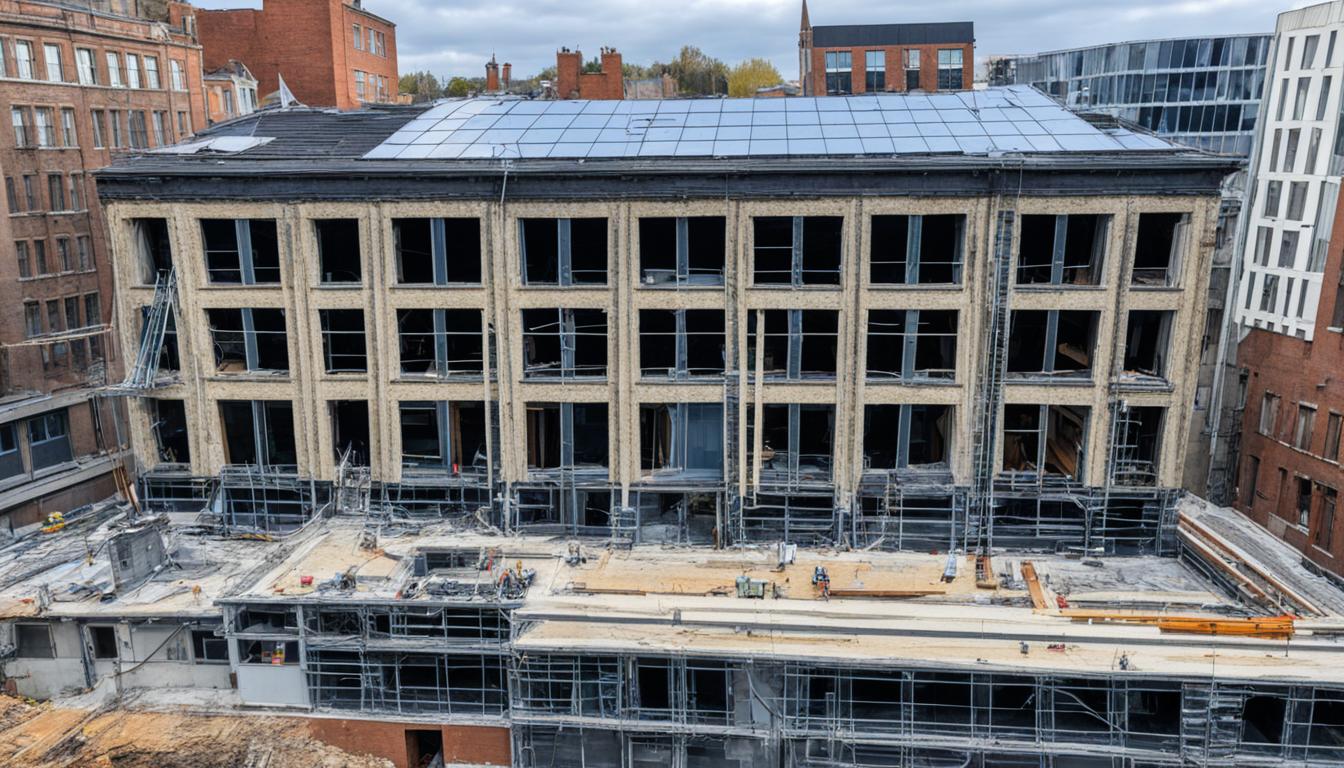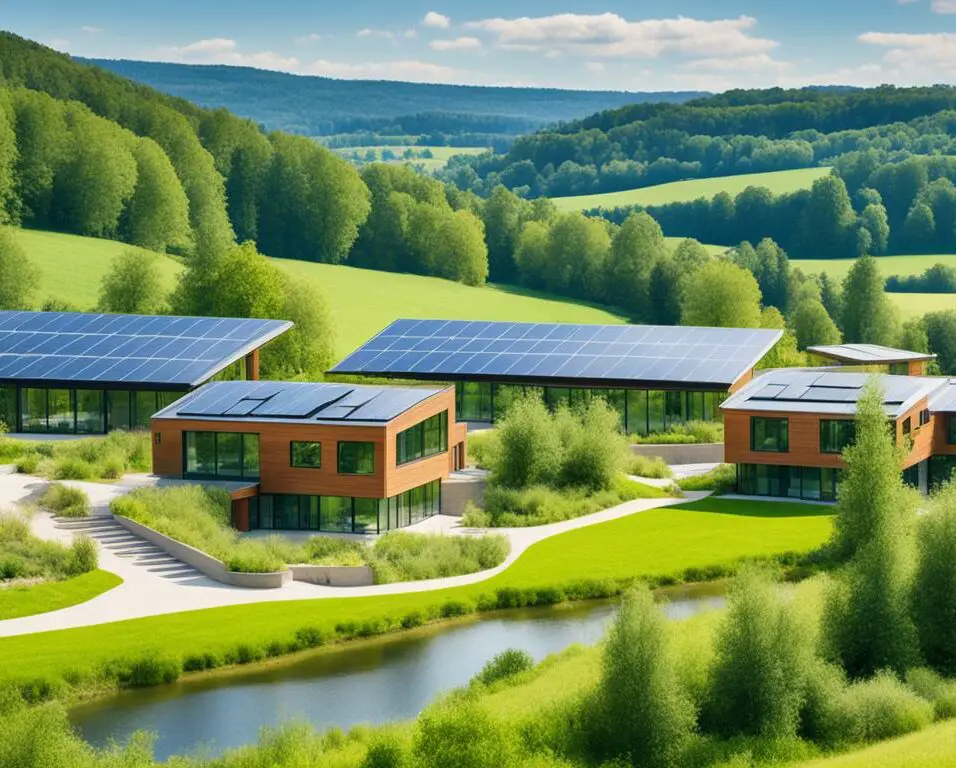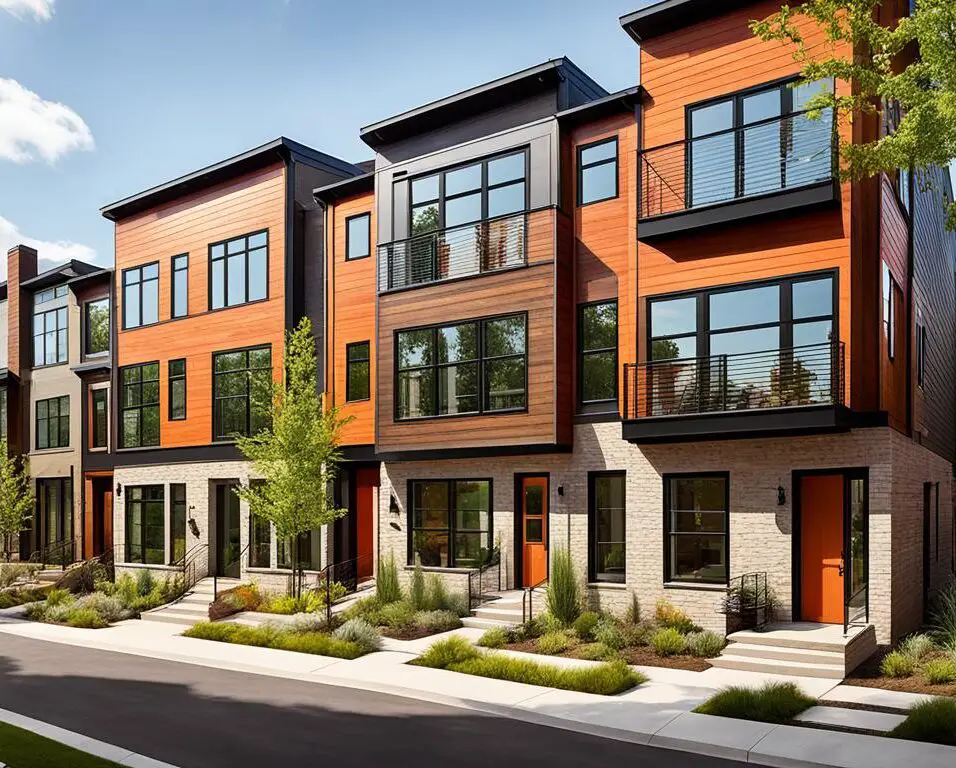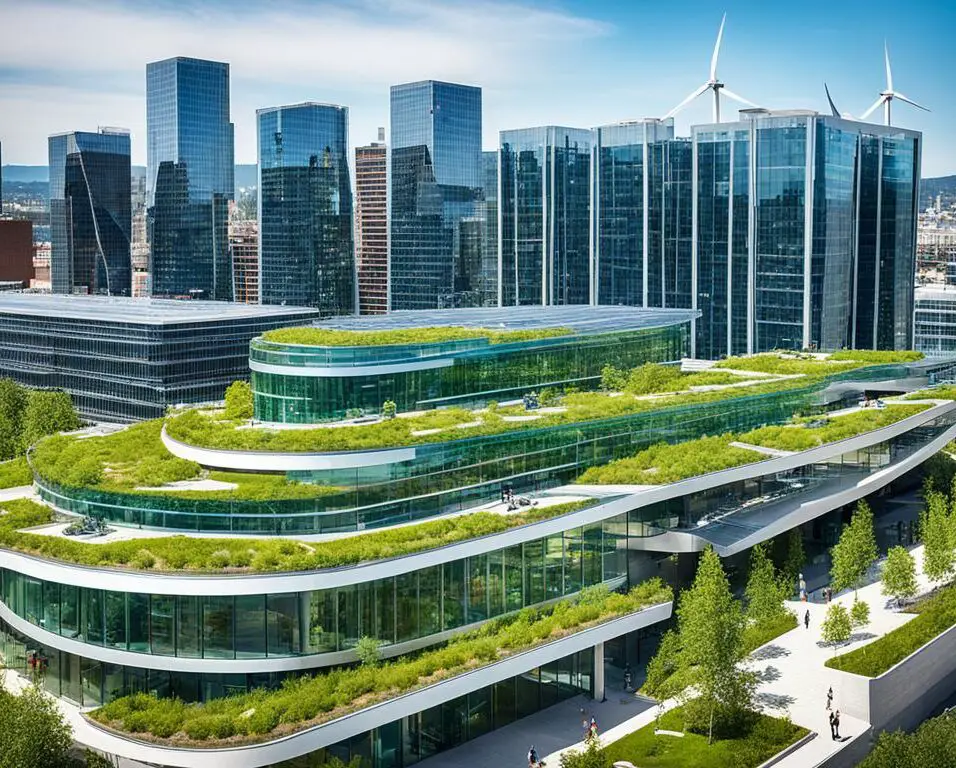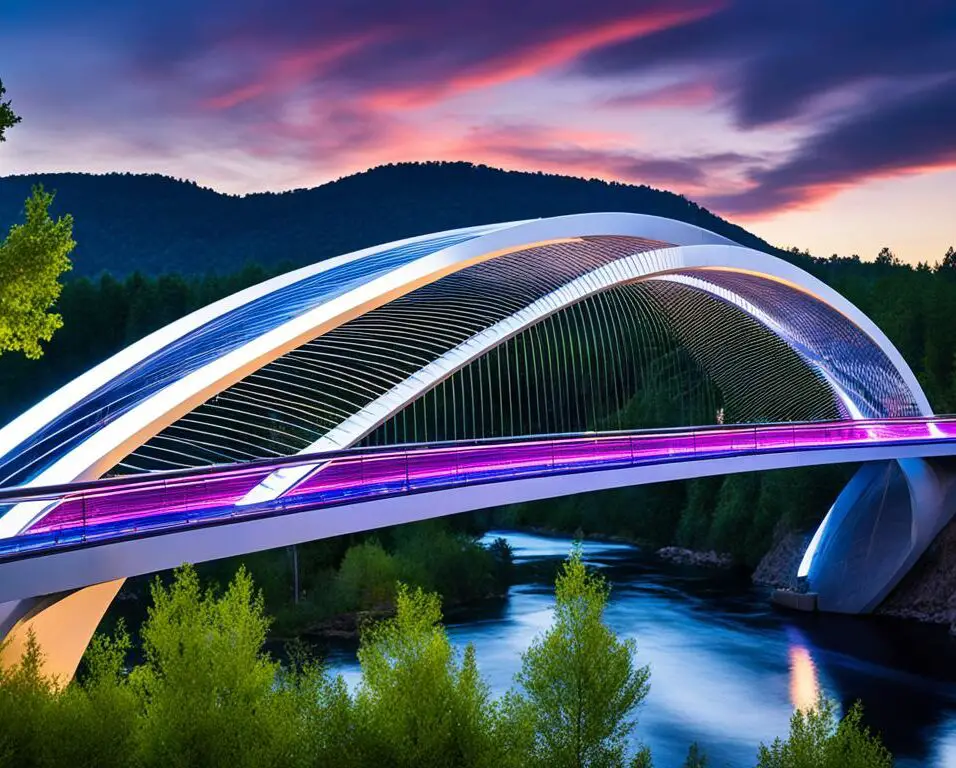The Benefits of Retrofitting Old Buildings for the Modern Age
Retrofitting old buildings offers numerous benefits in terms of energy efficiency, historical preservation, and modern functionality. According to a study, the built environment is responsible for 40% of global CO2 emissions and 33% of global waste. By retrofitting existing buildings instead of constructing new ones, we can significantly reduce carbon emissions and waste. In addition, retrofitting can be up to 45% more cost-effective compared to building new structures. This makes it not only a sustainable choice but also an economically viable one. Furthermore, retrofitting allows for the preservation of historical buildings, maintaining their cultural significance while incorporating modern technologies to enhance functionality and adapt to current needs. The time is now to prioritize renovation and reap the benefits it brings.
Key Takeaways:
- Retrofitting old buildings helps reduce carbon emissions and waste
- Retrofitting is a cost-effective alternative to building new structures
- Retrofitting preserves the historical and cultural significance of buildings
- Modern technologies can enhance the functionality of retrofitted buildings
- Retrofitting brings both environmental and economic benefits
The Environmental Impact of Retrofitting Old Buildings
Retrofitting old buildings plays a vital role in reducing carbon emissions and waste. The built environment is responsible for 40% of global CO2 emissions and 33% of global waste. By renovating existing buildings instead of constructing new ones, we can significantly decrease carbon emissions associated with the construction process.
Implementing energy-efficient technologies and materials during retrofitting allows for substantial reductions in the energy consumption of buildings, further lowering their carbon footprint. These technologies include:
- Energy-saving lighting systems
- High-efficiency HVAC (Heating, Ventilation, and Air Conditioning) systems
- Smart building automation systems
- Insulation and weatherization
- Renewable energy systems, such as solar panels
Reducing energy consumption not only helps combat climate change but also leads to significant cost savings for building owners and occupants. Energy-efficient buildings require less energy for heating, cooling, and lighting, reducing utility bills and operating costs.
In addition to minimizing carbon emissions, retrofitting also contributes to waste reduction. By repurposing existing buildings, we can minimize the need for new construction materials, reducing the demand for raw resources, and minimizing the environmental footprint of the construction industry. Retrofitting can also involve recycling and reusing materials from the existing structure, further reducing waste.
Overall, prioritizing retrofitting and adopting sustainable construction practices can help us make a significant positive impact on the environment. By reducing carbon emissions and waste through retrofitting, we can contribute to a more sustainable future.
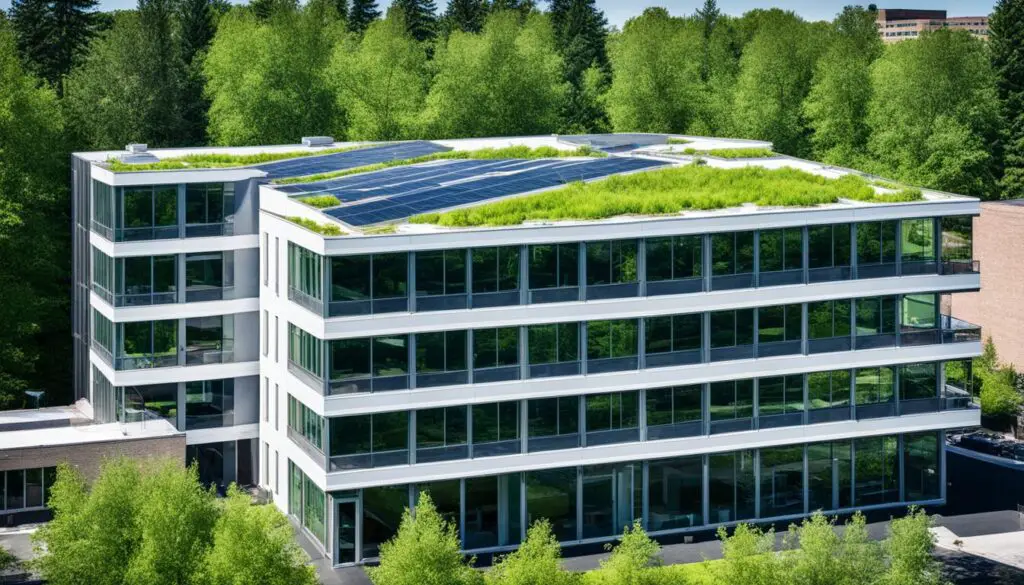
Comparison of Carbon Emissions in Retrofitting vs. New Construction
| Retrofitting | New Construction | |
|---|---|---|
| Carbon Emissions | Significantly Reduced | High Emissions |
| Energy Consumption | Decreased | Higher |
| Waste Generation | Reduced | Higher |
| Cost | Potentially Cost-Effective | High Costs |
Preserving History Through Building Retrofitting
Retrofitting old buildings allows for the preservation of historical structures and their cultural significance. Historical buildings contribute to the identity and character of cities and communities. Through retrofitting, we can retain the unique architectural features and historic elements of these structures while ensuring they meet modern standards and functionalities.
Adaptive reuse is a key aspect of building retrofitting, enabling historical buildings to be repurposed for new uses without compromising their original design and historical value. By repurposing these buildings, we honor their historical significance while adapting them to serve modern needs.
“Preserving historical architecture is a way of preserving cultural heritage for future generations, giving them a tangible connection to the past,” says Dr. Emily Parker, an expert in historical preservation.
By preserving and repurposing historical buildings, we maintain our cultural heritage and create a sense of continuity between the past, present, and future. Retrofitting old buildings not only benefits the environment and economy but also preserves our shared history.
Adaptive Reuse Examples:
To further illustrate the concept of adaptive reuse, here are some remarkable examples of historical buildings that have been successfully repurposed:
- The High Line in New York City, once an abandoned elevated railway, has been transformed into an urban park and a prime example of adaptive reuse.
- The Tate Modern in London, formerly a power station, has been converted into a world-renowned art museum while preserving its industrial character.
- The St. Pancras Renaissance Hotel in London revitalized a Victorian railway hotel, combining historical charm with modern luxury.
These examples highlight the potential of adaptive reuse in preserving historical buildings and enhancing their cultural significance.
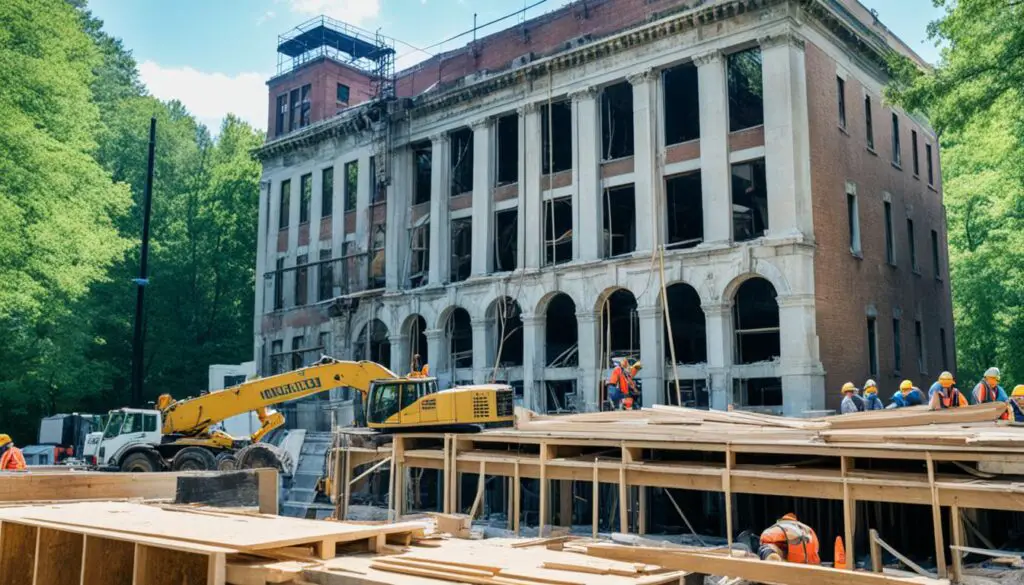
In the next section, we will explore how retrofitting old buildings maximizes functionality and efficiency through the integration of modern technologies and design elements.
Maximizing Functionality and Efficiency Through Retrofitting
Retrofitting old buildings offers a cost-effective solution to enhance their functionality and performance by incorporating modern technologies and design elements. By optimizing the layout and functionality of existing structures, we can meet the demands of the modern age and create spaces that are both aesthetically pleasing and highly functional.
One of the key aspects of building retrofitting is improving accessibility. By upgrading entrances, corridors, and elevators, we can ensure that buildings are accessible to all, providing equal opportunities for everyone to enjoy the space.
Integrating smart building automation systems is another way to enhance the modern functionality of retrofitted buildings. These systems allow for efficient control and management of various aspects, such as lighting, temperature, and security, maximizing convenience and energy savings.
Energy efficiency is a crucial aspect of retrofitting, and it can be achieved through insulation and advanced HVAC systems. By improving insulation and upgrading heating, ventilation, and air conditioning systems, buildings can significantly reduce energy consumption and lower operational costs.
Retrofitting also provides an opportunity to upgrade electrical and plumbing systems, improving overall performance and efficiency while reducing maintenance costs in the long run. By taking advantage of the existing structure, retrofitting is often a more cost-effective option compared to building new structures, making it an attractive choice for property owners.
By embracing retrofitting as a sustainable and cost-effective solution, we can maximize the functionality and efficiency of old buildings, transforming them into modern spaces that meet the demands of the present while preserving their historical and cultural significance.



